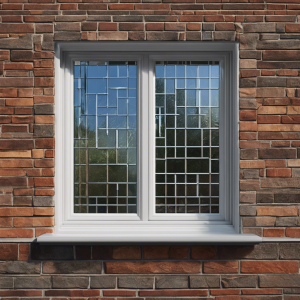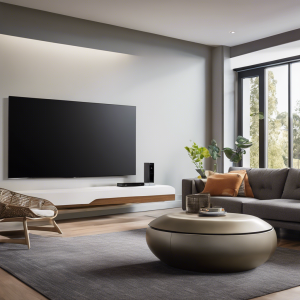Imagine a world where your home is shielded from the dangers of high temperatures. By incorporating heat resistant materials, you can rest assured that your family and belongings are safeguarded against potential disasters.
But that's just the beginning. Discover how these materials not only prevent fire hazards and reduce the risk of burns but also enhance the overall safety of your living space.
By making this simple yet effective change, you are taking a crucial step towards a safer and more secure home environment.
Prevents Fire Hazards
By using heat resistant materials in your environment, you significantly reduce the risk of fire hazards. Safety measures are crucial in creating a secure space for you and your loved ones. Prevention techniques play a vital role in mitigating potential dangers within your surroundings.
When you choose heat resistant materials for your home, you're actively taking a proactive step towards preventing fire hazards. These materials are designed to withstand high temperatures, thus reducing the likelihood of a fire breaking out. By investing in such preventive measures, you're ensuring the safety and well-being of everyone in your household.
Furthermore, incorporating heat resistant materials in key areas such as the kitchen, fireplace, or any other space where heat sources are present, you're creating a shield against potential fires. These prevention techniques are essential in maintaining a secure environment, giving you peace of mind and the freedom to move about without constant worry.
Reduces Risk of Burns
Using heat resistant materials in your living space significantly decreases the likelihood of sustaining burns from accidental contact with hot surfaces. When considering kitchen protection, these materials act as a barrier between you and potential sources of heat, such as stovetops, ovens, and other cooking appliances. By installing heat resistant materials in your kitchen, you create a safer environment where the risk of burns from direct contact with hot surfaces is greatly reduced.
The insulation benefits of heat resistant materials also play a crucial role in reducing the risk of burns in your home. These materials help contain heat within appliances, preventing the external surfaces from reaching extreme temperatures that could cause burns upon contact. Insulation not only protects you from accidental burns but also enhances the overall safety of your living space by minimizing the chances of heat-related injuries.
To further enhance the safety of your home and decrease the risk of burns, consider using heat resistant materials in areas prone to high temperatures, such as the kitchen and around fireplaces. By taking proactive measures to incorporate these materials into your living space, you create a protective environment that prioritizes your well-being and minimizes the potential for burns caused by hot surfaces.
Enhances Overall Safety
Incorporating heat resistant materials into your living space consistently enhances overall safety by providing a proactive barrier against potential heat-related hazards. By utilizing materials designed to withstand high temperatures, you create a protective environment that prioritizes safety and minimizes risks.
Here are four key ways in which heat resistant materials enhance safety:
- Heat Insulation: Heat resistant materials act as a barrier, preventing excessive heat from penetrating surfaces and causing potential hazards. This insulation helps maintain safe temperatures within your living space, reducing the risk of accidental burns or fires.
- Temperature Regulation: These materials aid in regulating the temperature of surfaces, ensuring they remain at safe levels even when exposed to heat sources. By controlling temperatures effectively, heat resistant materials contribute to a safer environment for you and your loved ones.
- Fire Resistance: Heat resistant materials are often designed to be fire-resistant, offering an added layer of protection against potential fires. This quality significantly reduces the likelihood of fires spreading and causing extensive damage, enhancing overall safety in your home.
- Durability: Heat resistant materials are known for their durability and longevity. By incorporating these materials into your living space, you create a safer environment that can withstand heat-related challenges effectively, providing long-term safety benefits.
Incorporating heat resistant materials not only enhances safety but also offers peace of mind, knowing that your home is equipped to handle heat-related risks effectively.
Safeguards Living Space
To safeguard your living space effectively against heat-related risks, consider the strategic placement of heat resistant materials in key areas. By incorporating these materials, you not only enhance the safety of your home but also improve its insulation and promote durability.
One key area to focus on is your walls. Heat resistant materials such as fire-resistant drywall or mineral wool insulation can act as a barrier against heat transfer, reducing the risk of fires spreading within your home. Additionally, these materials can help regulate the temperature inside, making your living space more comfortable while lowering energy costs.
Another vital area to safeguard is your flooring. Installing heat resistant flooring materials like ceramic tiles or concrete can prevent heat damage and reduce the risk of fires caused by hot surfaces. These materials are not only durable but also easy to clean and maintain, ensuring long-term safety and peace of mind.
In the table below, you can see a comparison of common heat resistant materials used in living spaces:
| Material | Improves Insulation | Promotes Durability |
|---|---|---|
| Fire-resistant Drywall | Yes | Yes |
| Mineral Wool Insulation | Yes | Yes |
| Ceramic Tiles | Yes | Yes |
| Concrete | Yes | Yes |
| Heat Resistant Paint | Yes | Yes |
Frequently Asked Questions
Are There Any Specific Heat Resistant Materials That Are More Effective at Preventing Fire Hazards in the Home?
When considering specific heat resistant materials to prevent fire hazards in your home, it's essential to look at various options.
Heat resistant coatings can provide effective protection, but they may have their pros and cons.
On the other hand, fireproof fabrics offer durability and have versatile applications.
It's crucial to weigh the effectiveness of each material based on your specific needs and the areas of your home that require protection.
How Do Heat Resistant Materials Compare in Terms of Cost and Longevity Compared to Traditional Materials?
When comparing heat resistant materials to traditional ones, cost comparison is vital. Heat resistant materials may have a higher upfront cost, but they offer long-term savings due to their durability.
Conducting a durability analysis is crucial to understand the lifespan of these materials and how they withstand extreme temperatures over time.
Investing in heat resistant materials could save you money in the long run and provide added safety benefits for your home.
Can Heat Resistant Materials Provide Additional Benefits Beyond Just Safety, Such as Energy Efficiency or Insulation?
Like a sturdy shield, heat resistant materials can offer more than just safety benefits.
When it comes to energy efficiency, these materials can help regulate temperature, reducing the need for excessive heating or cooling.
Their superior thermal performance can also enhance insulation, keeping your home comfortable and potentially lowering energy costs.
Are There Any Maintenance Requirements or Precautions That Need to Be Taken When Using Heat Resistant Materials in the Home?
When incorporating heat resistant materials into your home, it's crucial to be aware of maintenance requirements and precautionary measures.
Regular inspections for wear and tear, such as cracks or discoloration, are essential. Additionally, following manufacturer guidelines for cleaning and usage can prolong the lifespan of these materials.
It's also wise to keep flammable items away from heat sources and ensure proper ventilation to prevent overheating. Being proactive in maintenance and taking necessary precautions will help maximize the benefits of heat resistant materials in your home.
How Do Heat Resistant Materials Impact the Overall Aesthetics and Design of a Living Space?
When it comes to heat resistant materials, they can truly transform the aesthetics of your living space. These materials offer a wide range of design flexibility, allowing you to get creative with your decor.
For instance, incorporating a sleek heat-resistant backsplash in your kitchen not only adds a modern touch but also ensures durability and safety.



